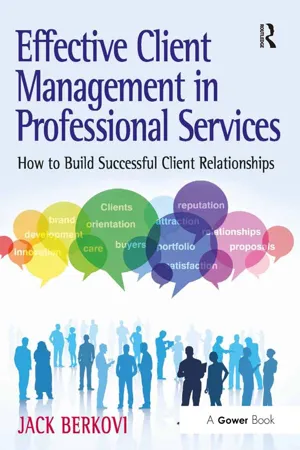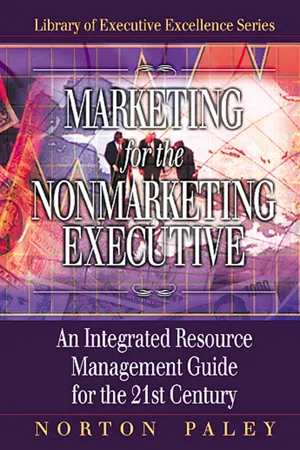Business
Business Development
Business development involves activities and initiatives aimed at creating and implementing growth opportunities within an organization. This can include identifying new markets, forming strategic partnerships, and expanding product offerings. The goal of business development is to drive sustainable growth and profitability for the company.
Written by Perlego with AI-assistance
Related key terms
1 of 5
7 Key excerpts on "Business Development"
- eBook - PDF
Business Development
A Market-Oriented Perspective
- Hans Eibe Sørensen(Author)
- 2014(Publication Date)
- Wiley(Publisher)
The result of this work is added to a business plan for each growth opportunity or strategic initiative. Note that the focus of the Business Development process is to determine the business venture’s potential routes. It is the role and responsibility of senior management and strategic Implement initiatives • Support implementation • Performance tracking • Report progress and lessons learnt Growth opportunity • Organic growth with new products and new markets • Integration of businesses • Strategic alliances Craft business plan • Business model • Marketing, organization and finance plans • Approval process External analysis (OT) • Customer analysis • Segments and target markets • Competitor analysis • Industry and environment Internal analysis (SW) • Resources, capabilities, services • The value chain • Business processes • Organization’s design Module II Module III Figure 2.3 The Business Development process and its components’ primary expositions in this book. B U S I N E S S D E V E L O P M E N T 35 management to form the overall strategy within which the business developer optimizes profitable growth opportunities. Business Development covers both traditional expansions into other existing business areas new to the company in question and the creation of whole new businesses. The latter is far more complicated and challenging than the former. (Klaus Holmsberg, CEO at the incubator Syddansk Teknologisk Innovation and former Global Business Manager at Novozymes) 3.1.1.1 Growth opportunities Growth opportunities are related to either demand-enhancing activities or cost-reduction activities, or a combination of both. Such opportunities may reside within the business venture as well as externally. Business developers are predominantly concerned with organic growth opportunities relating to new products or services, new markets or market expansion or cost reductions through external collaborations, such as strategic alliances or integration with other businesses. - Martin Austin(Author)
- 2016(Publication Date)
- Routledge(Publisher)
1The Role of Business DevelopmentDefining Business Development
What is ‘Business Development’? This is usually the first question I have to answer whenever I’m asked what I do for a living by people outside the pharmaceutical industry. The answers I try to give are often tailored to the audience and what they are likely to quickly understand from their own experience. However, as few people have any idea that such a role exists beyond some hazy idea of marketing they usually smile politely and suddenly remember there is someone on the other side of the room to whom they must say hello immediately. So a definition of Business Development, at least as I have seen it performed since it comes in many different guises, will be useful. I define it as ‘any activity that alters the status quo of the business’. This includes activities such as:• planning • adding for growth • subtracting for profit • business process improvement • competitive awareness and advantage.Planning is a central activity to Business Development because, as a friend once told me, ‘There is no worse combination than great tactics and a lousy strategy – you just make things worse faster.’ In order to plan well, the business developer will need to have or obtain a number of skills and resources and these will be the subject of later chapters. However, a base set of skills for the business developer include being well organized, having a good breadth of knowledge, imagination, being good at analysis in different forms and having good communications skills, particularly listening and interpretation. Good organization means not just being able to collect information but to collate it, recall it and relate it. I have had the advantage of having worked briefly in IT with database designers and seen how the discipline of having a process for each of these activities creates a systematic approach. These processes can be made into a computer program. Addressing the information needs of planning in a systematic way brings organization to the planner and helps in structuring their communications to their own organization and to their counterparties in any negotiations.- eBook - PDF
- Joao Heitor De Avila Santos(Author)
- 2020(Publication Date)
- Society Publishing(Publisher)
Therefore, the management or supervisory board must be able to integrate all facets and resources owned by the company to work in conjunction with both the company’s environment and the world outside the company by partnering with other companies or suppliers that can help create operationalization companies that are productive and able to produce. Based on this, the relationship between the corporate strategy in terms of cooperation synergy, Business Development strategy, supplier network strategy, and dynamic capabilities will be studied in depth to achieve excellent business performance. 1.6.1. Business Development Strategy Business Development Strategy is how companies develop business and business management (Figure 1.6). Changing Business Dynamics: An Overview 19 Figure 1.6: The components that makeup Business Development. Source: 3qinnovation.org. Business Development strategy, in general, can be achieved using several approaches, namely: • Market Penetration: Market penetration is accomplished by selling large quantities of old products to the market. In other words, if supply is increased in volume, the product is still acceptable and consumed by the existing market. Market penetration strategy is a high-risk development strategy because it requires multiple company resources and capabilities. Theoretically, merely maintaining market share in a growing market will result in growth, but keep in mind that market penetration is a limit and, once a market approach is saturated, other strategies must be pursued if the company wants to continue growing. • Market Expansion: It means finding new markets for the same product type. Such expansion is an effort to sell excess production not consumed by the old market or intentionally done to increase product sales. The new market growth approach can be a better Business Development strategy if the company’s core expertise is more relevant to a particular product than its market segment experience. - eBook - PDF
- Joao Heitor De Avila Santos(Author)
- 2019(Publication Date)
- Society Publishing(Publisher)
The plans may be short term or long term, strategic or operational, and may vary greatly in scope. In spite of the variances in scope and coverage, each plan has a common purpose: to provide guidance and structure on a continuing basis for managing the organization in a rapidly changing hypercompetitive environment. “Global business is defined as a corporate or economic activity that takes place across different countries.” “The definition of International Business Development as the creation of long-term value for an organization from International customers, markets and relationships.” There is an international business involved in any of the invention processes, whether during the stage of prototyping, manufacturing, licensing or selling a product. Business outcomes are different around the world, and when an organization expands its business across the globe, it is mandated to be aware of the different countries policies and customs. The essentials Developing the Global Business Plan 137 of developing a worthwhile business are by knowing the key business behaviors like Knowing, Observing, and Reacting to avoid embarrassment. 5.3. GLOBAL Business Development The term ‘Global Business’ means any type of business activity that crosses the national borders. There are a number of definitions in the business literature but there is no universally accepted definition exists for the term global business. A global business is defined as “an organization that buys or sells goods and services across two or more countries, even if the management is located in one single country” (Figure 5.1). Figure 5.1: Global Business Development. S o u r c e : h t t p s : / / e n c r y p t e d -t b n 0 . g s t a t i c . c o m / images?q=tbn:ANd9GcQQ4r6hlH7-WMICj0Ak-ImiQL3XcwVMdryoltl3AF-1hEhs-k6gR 5.4. - eBook - ePub
Effective Client Management in Professional Services
How to Build Successful Client Relationships
- Jack Berkovi(Author)
- 2016(Publication Date)
- Routledge(Publisher)
Best practice Business Development can be defined as the approach used by a firm’s people to identify Client issues and create solutions. It is often said that marketing has the role of analysing markets and targeting strategically important sectors and prospects, thus ‘opening doors’ for business developers to follow up and ‘close’ on a commitment from a prospective Client. The Business Development function and culture are still relatively new to professional services firms but is growing in importance. Some firms have a team that is dedicated to Business Development. Its purpose is usually to focus sales resources on specific target Clients or prospects. Experience shows that in some professional service sectors there can be a potential 20 per cent ‘churn’ rate among the Client base. It can take up to 10 productive meetings over an 18-month period to win a new Client. This means that adopting a co-ordinated and sustained approach to Business Development is essential. The most enlightened firms have stimulated and developed a Business Development mind-set and collaboration across all Client-facing functions.Strategic marketing plans are prepared to attract these prospects and Clients through various tactical activities. The leads generated by these marketing activities are then followed up and qualified by Business Development people. Prior to a meeting with the prospect or the Client, many firms sets up an internal meeting to discuss their potential and agree a plan of action to convert the opportunity into business. The person responsible for Business Development then helps fee earners to retain and grow business with the Client. As mentioned in earlier chapters, the aim is to develop a portfolio of loyal Clients who consider the firm as its trusted adviser.As it is not possible to resource a Business Development programme to cover all of your existing Clients, it is important to have distinct programmes to grow existing Clients and to pursue new Clients. With existing Clients it’s best to focus on those that are most likely to yield the highest returns for the time invested. Some firms call these key or strategic Clients. Members of the Business Development team are expected to be well-versed in consultative selling which involves a detailed analysis of the prospective opportunity prior to contact and preparation of an agreed pursuit plan.A focused programme requires some form of strategic Client planning and a managed pipeline that shows the flow of opportunities from initial enquiry to conversion to business. Recent research by the UK Financial Times - eBook - ePub
Virtual Business Models
Entrepreneurial Risks and Rewards
- Karin Bryder, Anki Malmborg-Hager, Eskil Söderlind(Authors)
- 2016(Publication Date)
- Woodhead Publishing(Publisher)
Chapter 4Business Development
Abstract
The Business Development team is a communicator of the Virtual Company’s business mainly externally but also internally. This team will ensure that the development is in correlation with the demands from the outside world and telling the world of the Virtual Company developments when appropriate. Defining the core asset of the company is important and will ensure that all Business Development activities are focused on the development of the company asset and the product. Choose the Business Development team carefully and it should include all competences used for the product development. Regularly scheduled meetings using virtual communication and face-to-face meetings are important in order to keep everyone focused on the right issues. A well-prepared Business Development plan will save time and money. The business plan is not a one-time effort but needs to be continuously updated on the basis of the progress of the company and to be used in the overall execution of the Business Development activities.Keywords
Business Development; business plan; competitive intelligenceBusiness Development
Formal information flow in the nonvirtual company
Business Development in the nonvirtual company is often a team effort where the key responsibility rests with the CEO or a VP Business Development executive. The overall objective for the Business Development team is to advance the business, an objective that includes marketing, sales, communication to external stakeholders, and the overall responsibility for relevant agreements. The detailed Business Development responsibilities might differ from company to company, depending on the nature of the business and also on how the work is divided between the CEO and the Business Development department. In the nonvirtual company, there is a formal structure where the different company functions interact and can formally report to the Business Development manager. In this way, the information flow is controlled in a formal way according to the nonvirtual company’s organization (Figure 4.1 - eBook - PDF
Marketing for the Nonmarketing Executive
An Integrated Resource Management Guide for the 21st Century
- Norton Paley(Author)
- 2000(Publication Date)
- CRC Press(Publisher)
New Products/Existing Markets (Product Development) — The portfolio for-mat permits you to expand your thinking, as long as it stays within the boundaries of 198 Marketing for the Nonmarketing Executive The Strategic Marketing Plan 199 the strategic direction created for your business or product line. Your aim is to look for new products that you can sell to current customer segments. With new products defined as those that are perceived by the customer as new, your new product can in-clude adding features to existing products, or providing value-added services, or de-signing new packaging, as well as pioneering new-to-the-world products. That is, as long as the “new” perception exists. However, remember the guideline: the broader the dimension of your strategic di-rection, the broader the possibilities for the content of your portfolio. If the definition of your business is narrow you may be limited in what you can list in this part of your portfolio. You still have the opportunity at this point to go back to the strategic direc-tion and recast it to give you more possibilities for expansion. Do so, if that is con-sistent with the overall mission of your organization and the aims of senior management. Existing Products/New Markets (Market Development) — Another growth direction is to take your current products into new markets. Explore possibilities for market development by identifying emerging, neglected, or poorly served segments in which existing products can be utilized. New Products/New Markets (Diversification) — This portion of the business portfolio is truly visionary, since it involves developing new products to meet the needs of those markets new to the business. Interpret your strategic direction in its broadest context. Don’t seek diversification for its own sake. Rather, the purpose is to develop an organized framework for meaningful expansion. New technologies, global markets, and new strategic alliances dictate this section’s development.
Index pages curate the most relevant extracts from our library of academic textbooks. They’ve been created using an in-house natural language model (NLM), each adding context and meaning to key research topics.






